
Table of Contents
- 1. Icelanders’ Daily Meal: Fish
- 2. A Healthy Choice: Skyr
- 3. The Most Famous Icelandic Snack: Pylsa (Pulsa)
- 4. A Challenging Tradition: Hákarl, or Fermented Shark
- 5. A Meat Lover’s Favourite: Icelandic Lamb Dishes
- 6. Smoked Lamb: Hangikjöt
- 7. The Local All-Time Favourite: Icelandic Ice Cream
- 8. Baked by Hot Spring: Rúgbrauð, or Dark Rye Bread
- 9. Something Strong: Brennivin
No matter how you plan on travelling through Iceland, whether you’re renting a car or seeing the island by tour, if you’re a foodie, you have to try some traditional Icelandic food. Iceland's food is unlike any other kind of food you’ll find in the world — and is just as unique as the country itself.
In this article, we’re going to answer you’re most-asked questions about Iceland food, including:
- What is Iceland’s traditional food and what traditional Icelandic food should you try during your trip in Iceland?
- What’s the “weird” local Iceland food you can’t miss?
- What snacks do Icelanders love the most?
- And more!
Here are our top tips as Icelandic locals, as to what you need to taste and try while in Iceland. These are our favourite and most recommended nine Icelandic dishes, so you can eat like a local and embrace Icelandic culture during your trip.
1. Icelanders’ Daily Meal: Fish

As you might’ve already guessed, Icelanders love fish. We are an island country after all, so fishing is a big industry and many of our villages are historically fishing villages. In fact, once upon a time, Icelanders used fish as bread. Really!
In the 1700s and before, it was difficult to find grain in Iceland, as it had to be imported from Denmark, making it incredibly expensive. Bread was a luxury, and so rather than eat bread with a meal, Icelanders would eat fish. Stockfish, or traditional Icelandic fish and the dish that would be used as bread in the 1700s, is made by cleaning and deboning the fish and then allowing it to dry for up to six weeks (historically, it only takes 48 hours today).
People don’t quite eat fish in that same way today, but we still love a good piece of fresh fish, whether that be haddock, cod or Atlantic wolffish. We Icelanders have made fish a daily dish as recently as the 1950s and 1960s, even eating fish for breakfast. Today, Icelanders eat fish, on average, about twice per week. Icelanders eat fish oil even more often, on average about four times per week.
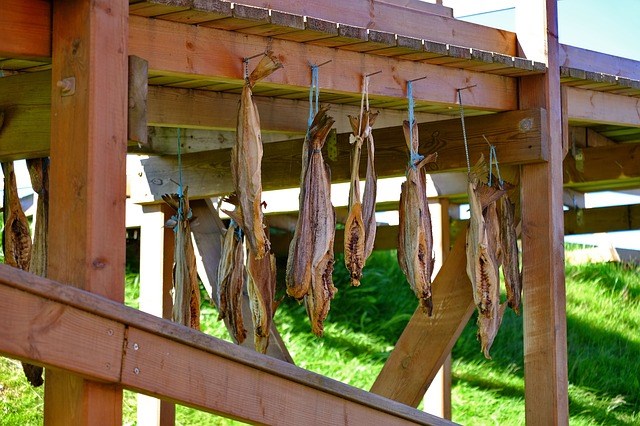
When you’re dining out during your trip to Iceland, look for Icelandic fresh fish on the menus. You can usually find fresh fish that was caught as recently as the same day. Popular types of Icelandic fish include wolffish (sometimes called the Atlantic catfish), cod, dealfish, the Greenland shark and three types of salmon species, including Arctic char, Atlantic salmon and brown trout (which, yes, is actually salmon).
For a fish-based snack to take on the go, try hardfiskur, which translates to “hard fish,” made from fish cured in the fresh air. You can eat it a little like you would beef jerky and you can find it at just about every supermarket.
2. A Healthy Choice: Skyr
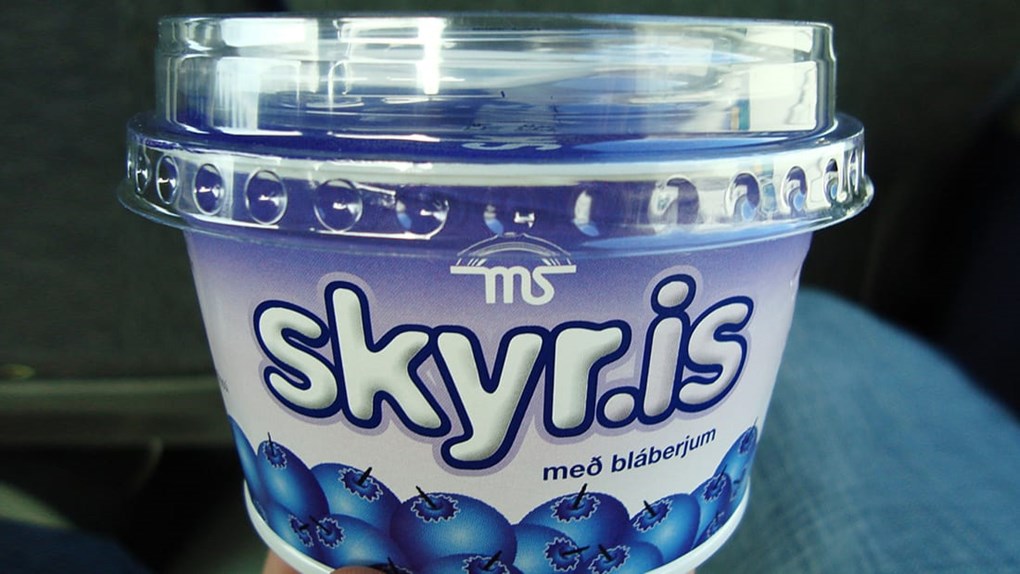
Credits: flickr/parcydarks/creative commons
You may already be familiar with skyr, or a type of Icelandic dairy product that’s a little bit like yoghurt and a little bit like cottage cheese, and even a little bit like Greek yoghurt or creme fraiche. You can find it in many supermarkets around the world. Often served with jam or sugar, it’s great with an accompaniment, but also delicious plain.
But while Greek yogurt is a bit of a newer fad among health food fans, skyr is a traditional Icelandic food that’s been around for a while. In fact, you can see historic skyr at the National Museum of Iceland, where the museum displays three jars of ancient skyr leftover from the earliest Icelanders! That ancient skyr dates back to more than a thousand years.
Pick up some skyr at an Icelandic supermarket as you stock up for an Icelandic camping trip or road trip, or see if you can find it in advance of your Iceland trip, at your home specialty foods store.
3. The Most Famous Icelandic Snack: Pylsa (Pulsa)
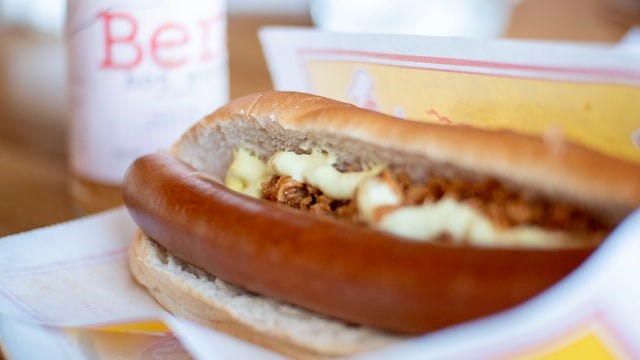
Wondering what food to buy in Iceland? Whether you’re staying in a homestay, at a hotel, taking a road trip or going on an Iceland camping trip, you’re going to need to stock up on snacks and what better snack to enjoy than the most famous Icelandic snack of all — pylsa!
Pylsa, sometimes called pulsa, is most like an American hot dog and it’s one of the top things to eat in Iceland. They’re made from lamb, beef and pork and can be topped with a variety of yummy ingredients, such as onions, mustard, ketchup or even a remoulade sauce. You can find pylsa at stands and casual restaurants throughout Iceland, but you can also buy them in the grocery store.
The most famous pylsa stand in all of Iceland is Baejarins Beztu Pylsur, which you can find in Reykjavik. The popular pylsa stand has been serving up its signature hot dogs since 1937 and is open until the wee hours of the morning, until 1 a.m. Its convenient location in Reykjavik, near museums, also makes it an easy stop to add to your itinerary for a quick and affordable lunch.
4. A Challenging Tradition: Hákarl, or Fermented Shark
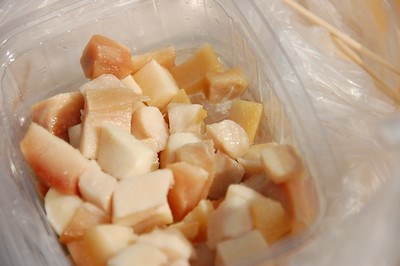
Credits: flickr/moohaha/creative commons
If you’ve ever read an article on the “grossest” international foods, you probably ended up reading about "hakarl", or Iceland’s fermented shark. While we don’t necessarily think of the dish as gross, as Icelanders, it’s definitely not a pleasant dining experience, even if it is part of our culinary heritage. So what exactly is it?
Hakarl is made by using Greenland shark, a fish that’s poisonous when eaten fresh; however, the fermentation process makes it safe to eat. The shark is cured via a fermentation process and then hung to dry for up to five months. The result is a strong, distinctive, ammonia-like smell and taste. The food originated when Icelanders needed to be creative regarding their preserved foods, in order to make it through long, arduous winters (in fact, historically, hakarl was made by soaking the shark meat in pee and then burying it underground!).
Today, hakarl is more of a tourist novelty than a part of everyday Icelandic cuisine. You can find hakarl served in a few select places (such as in the restaurant Þrír Frakkar Baldursgata), where it’s served in small, portioned cubes — because that’s all you can really handle! — and served along with some strong alcohol to wash the taste down. So, if you’re an adventurous eater, give it a try!
5. A Meat Lover’s Favourite: Icelandic Lamb Dishes
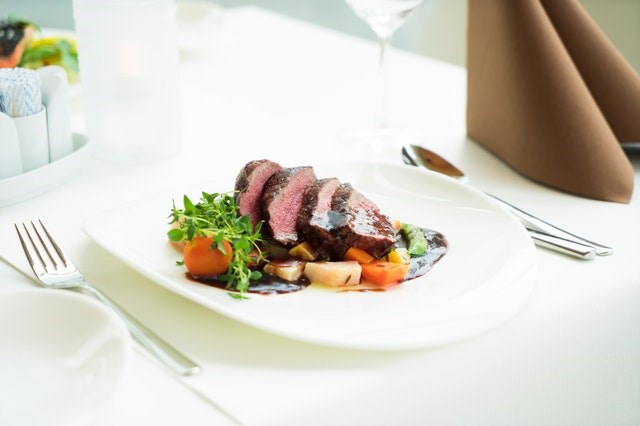
Just like fish has been a long-standing staple of traditional Icelandic food, sheep and lamb are also an important part of Iceland’s culinary heritage.
Sheep arrived in Iceland with the Vikings and the people here learned to use sheep for all kinds of things. In addition to using sheep for their wool (you’ll see many knitted and wool-based Icelandic products during your visit), we also use them for their meat. Still today, Icelandic farmers raise sheep for their meat, allowing them to roam freely during the spring and summer, looking for their own food (since grains are so difficult to come by in Iceland — remember, they have to be imported) and grazing on grass, berries and seaweed. This grazing process results in overall better meat. You’ll find the lamb dishes in Iceland are a little milder and more tender than the lamb that you might eat elsewhere.
One of the most popular lamb-based dishes in Iceland is hangikjot (which you’ll learn more about below), but you can also find smoked, grilled, broiled, slow-cooked, stir-fried, stewed and kebab lamb. Just about any way that you could cook lamb, you can find it here in Iceland.
6. Smoked Lamb: Hangikjöt
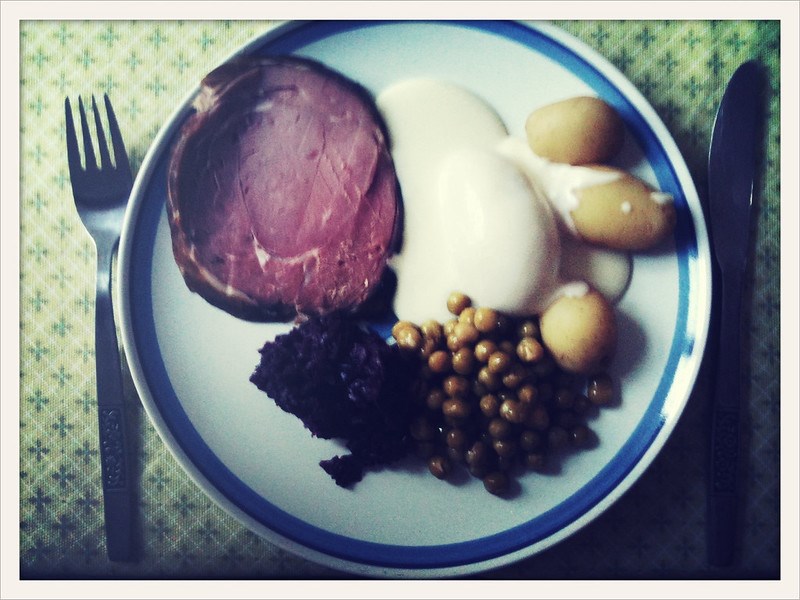
Credits: flickr/masch/creative commons
If you want to get more specific, though, when searching for the perfect Icelandic lamb dish to try, we can’t recommend the smoked lamb, or hangikjot, enough.
Hangikjot is another one of those Icelandic dishes that came about because the earliest inhabitants here needed a way to keep their food safe to eat over the long winters, when food was scarce. Hangikjot was a smoked meat dish that literally translates to “hung meat.” Icelanders would hang the lamb onto rafters in a smoking shed and then they would either burn birch wood or dried sheep dung mixed with hay beneath it, to preserve the meat for long-term use (a similar process was used for smoking salmon, sausages and even beer).
Today, you can find hangikjot served either boiled or served cold and sliced. It’s a common Icelandic dish served around Christmas time, especially when accompanied by potatoes, peas, cabbage and Icelandic bread that translates to “leaf bread” or “snowflake bread.” The bread is very thin and fried, and decorated with leaf or snowflake-like patterns. About 90% of Icelanders eat hangikjot during the Christmas season.
7. The Local All-Time Favourite: Icelandic Ice Cream
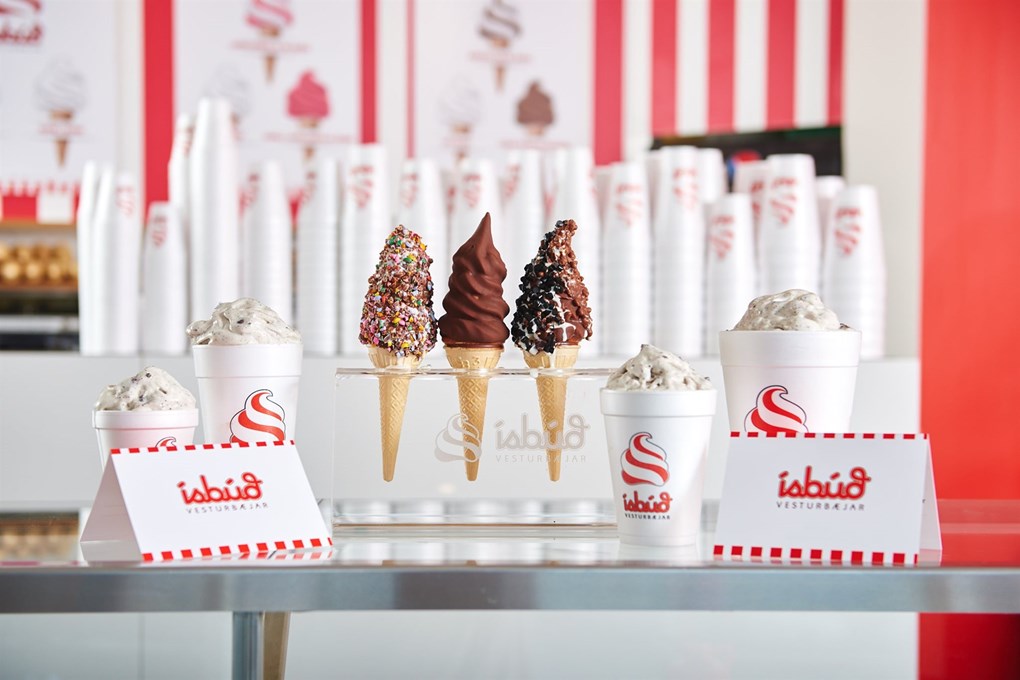
Credits: isbudvesturbaejar
It doesn’t matter how cold it is outside. Icelanders are oblivious to the cold when it comes to chowing down on their favourite frozen treat: Icelandic ice cream. You can find ice cream parlours in just about every Icelandic village and they’re particularly popular for a visit after a dip in one of Iceland’s geothermal pools. Vanilla soft-serve ice cream is the most popular, especially when you dip it in chocolate and cover it in candy. You can also get the Icelandic version of a banana split — soft-serve vanilla ice cream topped with three types of candy or fruit.
8. Baked by Hot Spring: Rúgbrauð, or Dark Rye Bread
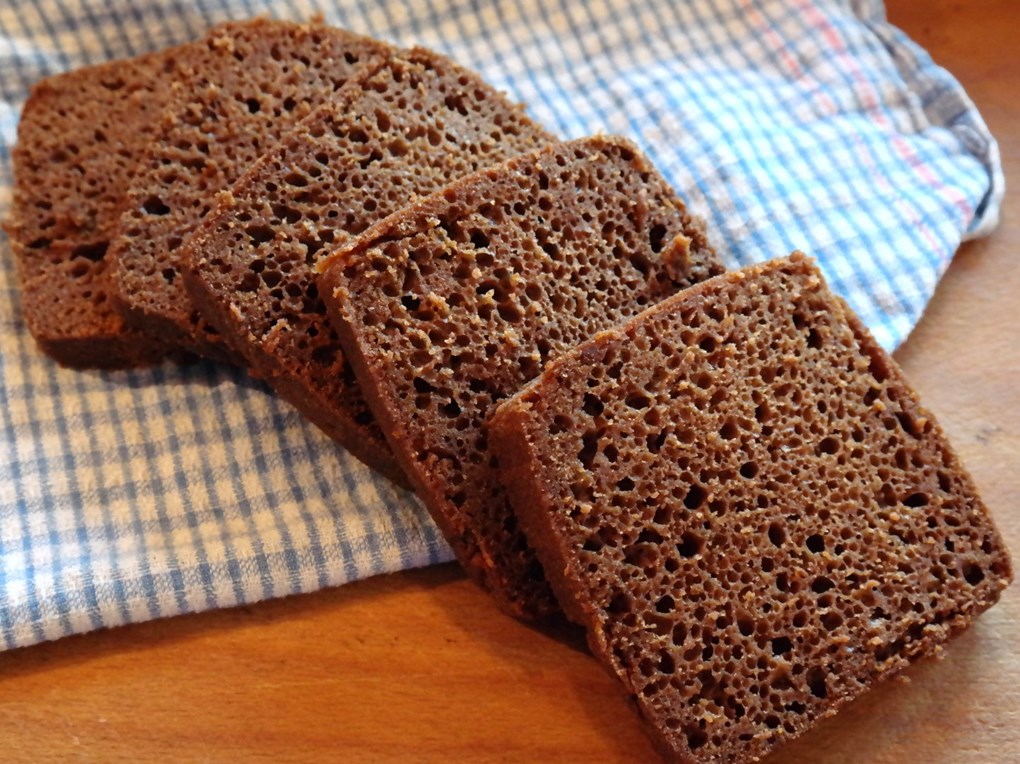
Credits: ljufalif.com
Sure, we said that Icelanders, at least historically, liked to use fish as their daily bread, but that doesn’t mean that Iceland doesn’t have some bread to call its own. Iceland’s traditional bread is a dark rye bread called Rúgbrauð and it’s made in a very interesting way.
You put the raw bread into a pot and then you can either place it in the embers of a dying fire, cover it with turf and let it sit there overnight, or you can bury the pot near a hot spring. Whichever way you choose, the heat will bake the bread and, the next day, you’ll have dark rye bread, delicious and toasty. Today, bread isn’t typically made by burying a pot or placing it over a dying fire. Instead, it’s more often made in a square pan. If you want to make some of your own at home, try this recipe.
The bread is often served with fish (of course!).
9. Something Strong: Brennivin
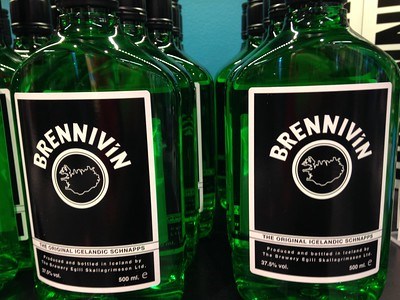
Credits: flickr/jenniferboyer/creative commons
Every country has a national alcoholic beverage. For Iceland, that traditional beverage is brennivin, a type of akvavit, or a Scandinavian-flavoured spirit. The flavour in brennivin is cumin and caraway.
While brennivin was enjoyed in Iceland as early as the 1600s, the branded brennivin you see today came about in the early 20th century. When Icelandic prohibition ended in 1935, the government produced a schnapps flavoured with caraway that was nicknamed Black Death, for its high alcohol content, and featured “brennivin” on the label. The liquor is still popular today (in fact, it was the most popular drink in Iceland until the 1980s) and is produced by Egill Skallagrimsson Brewery.
If you bring a bottle of brennivin home from your Iceland trip, you can make some of the favourite brennivin cocktails, including the black rose cocktail, brennivin bouquet cocktail and even iced coffee with brennivin. Iceland Magazine has all the details and recipes.
Try Iceland’s Rich and Interesting Culinary History for Yourself
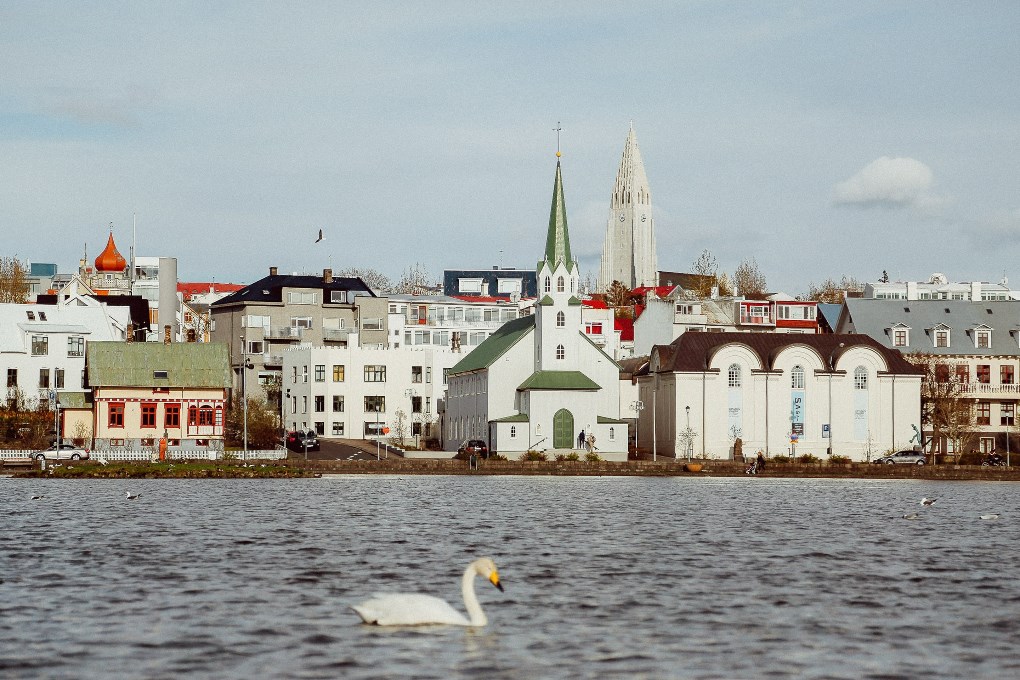
Iceland’s culinary heritage is filled with historic dishes that reflect Iceland’s geography, harsh weather and long winters. The resourceful first Icelanders created bread, fish dishes and other foods with what little they had — and the results were scrumptious (and, in some cases, as with the fermented shark, a little odd).
Try Iceland’s best and most iconic foods for yourself, when you travel across the island on a road trip. For more information about how to plan an Icelandic road trip, as well as tips on driving in Iceland, check out the Lava Car Rental blog.




